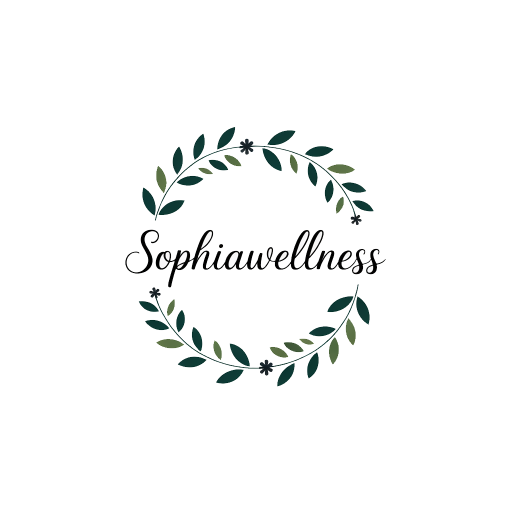How to Detox Your Mind for Greater Peace and Focus
To detox your mind for greater peace and focus, start by eliminating mental clutter through mindfulness practices. Prioritize journaling to process thoughts and set clear goals. Incorporate meditation techniques, like breathing exercises, to calm your mind. Engage in regular physical activity and maintain a balanced diet to boost your mental clarity. Create a peaceful environment by designating tech-free zones and establishing healthy boundaries. Find out more ways to enhance your mental well-being and clarity in the following sections.
Key Takeaways
- Practice mindfulness techniques to enhance present moment awareness and reduce stress, improving mental clarity and focus.
- Engage in daily journaling to process thoughts and emotions, helping to untangle mental clutter and boost productivity.
- Schedule regular digital detox breaks to limit distractions and create device-free zones that foster face-to-face interactions.
- Incorporate physical activity and a balanced diet rich in omega-3s and antioxidants to support cognitive function and emotional well-being.
- Create a peaceful environment by decluttering your space and establishing healthy boundaries, prioritizing self-care and clear communication of your needs.
Understanding Mental Clutter
Understanding mental clutter is essential for achieving clarity and focus in your life. This clutter consists of overwhelming thoughts, distractions, and negative emotions that weigh you down.
To master your mind, you need a mental detox, which involves identifying and eliminating these distractions. Start by recognizing what’s causing your mental chaos—be it personal issues, work stress, or an overload of information.
Once you pinpoint these sources, you can begin to declutter. Techniques like journaling or prioritizing tasks can help clear your mind. Additionally, engaging in mindfulness practices can significantly enhance your ability to clear your mind and reduce overall stress levels.
The Importance of Mindfulness
How can mindfulness transform your mental landscape? By cultivating awareness of the present moment, you can greatly enhance your focus and emotional resilience.
Mindfulness helps you detach from distractions, allowing your mind to clear and your thoughts to align. Consider these key benefits:
-
Enhanced Clarity: Mindfulness sharpens your perception, enabling you to see situations as they are, free from bias and emotional clutter.
-
Reduced Stress: Engaging in mindfulness practices lowers cortisol levels, helping you manage stress more effectively.
-
Improved Emotional Regulation: You’ll gain the ability to observe your feelings without judgment, fostering a sense of calm and control.
Additionally, practicing mindfulness can serve as an effective strategy for a mental detox, supporting your overall well-being through improved focus and clarity. Embracing mindfulness isn’t just a practice; it’s a pathway to mastering your mental clarity and emotional balance.
Techniques for Digital Detox
As you navigate an increasingly digital world, it’s essential to take steps toward a digital detox to reclaim your mental space. Consider implementing these powerful techniques:
| Technique | Description | Benefits |
|---|---|---|
| Scheduled Breaks | Set specific times to unplug. | Reduces stress and fatigue. |
| App Limitation | Limit usage of distracting apps. | Enhances focus and clarity. |
| Device-Free Zones | Create areas without devices. | Encourages mindfulness. |
Start by setting boundaries with your devices. Choose specific times to check notifications and stick to them. Prioritize face-to-face interactions over screens. By embracing these techniques, you’ll gain control over your digital life, enhancing both your peace and productivity. Additionally, incorporating mindfulness practices can significantly support your mental detox journey by fostering a deeper sense of inner peace.
Journaling for Clarity
While you may find it easy to get lost in your thoughts, journaling offers a powerful way to bring clarity to your mind. By putting pen to paper, you can untangle your emotions, reflect on your experiences, and gain insights that might otherwise elude you.
Here’s how to harness the potential of journaling:
-
Daily Reflection: Set aside a few minutes each day to write about your thoughts and feelings, helping you process experiences and recognize patterns.
-
Goal Setting: Use your journal to define and track your goals, providing clarity on your aspirations and the steps needed to achieve them.
-
Gratitude Practice: List things you’re grateful for, shifting your focus to positivity and enhancing your overall mental well-being.
Incorporating daily journaling into your routine can significantly boost your productivity and mental clarity. Embrace journaling as a tool for clarity and mastery.
Meditation Practices for Calmness
When you want to find calmness, meditation practices can be incredibly helpful. Breathing techniques and guided visualization are two powerful tools that can ground you and ease your mind. Additionally, incorporating relaxation techniques into your routine can enhance the benefits of meditation. Let’s explore how these methods can bring peace to your day.
Breathing Techniques
Breathing techniques can transform your meditation practice, helping you cultivate calmness and clarity.
Mastering your breath not only anchors you in the present moment but also enhances your overall mental well-being.
Here are three effective techniques you can incorporate:
-
Diaphragmatic Breathing: Focus on deep belly breaths, allowing your diaphragm to expand fully. This activates your parasympathetic nervous system, promoting relaxation.
-
Box Breathing: Inhale deeply for four counts, hold for four, exhale for four, and pause for four. This rhythmic pattern stabilizes your mind and reduces anxiety.
-
Alternate Nostril Breathing: Close one nostril, inhale through the other, then switch. This balances your energy and calms your thoughts, enhancing focus.
Integrate these techniques into your sessions for profound mental clarity.
Guided Visualization
Guided visualization can be a powerful tool for calming your mind and enhancing your meditation practice. By immersing yourself in vivid imagery, you can create a serene mental space that fosters focus and tranquility.
| Steps | Description |
|---|---|
| Find a Quiet Place | Choose a space free of distractions. |
| Set Your Intention | Clarify what you want to achieve. |
| Visualize Clearly | Picture serene scenes vividly. |
| Breathe Deeply | Maintain a steady breath throughout. |
As you practice, allow the images to guide you deeper into relaxation. With consistency, you’ll cultivate a greater sense of peace, enabling you to navigate life’s challenges with clarity and mastery.
The Role of Physical Activity
Physical activity isn’t just good for your body; it’s a powerful tool for your mind too.
When you engage in exercise, you boost your mood and increase your focus, helping to clear mental clutter.
Plus, moving your body can be a form of mindfulness, allowing you to connect with the present moment.
Benefits of Exercise
While you might think of exercise as just a way to stay fit, it actually plays an essential role in detoxifying your mind. Engaging in regular physical activity can enhance your mental clarity and emotional well-being.
Here are three key benefits:
-
Stress Reduction: Exercise releases endorphins, which help alleviate stress and anxiety, promoting a calmer mindset.
-
Improved Focus: Physical activity boosts blood flow to the brain, enhancing cognitive functions and sharpening your focus.
-
Enhanced Mood: Regular workouts increase serotonin levels, leading to a more positive outlook and greater resilience against negative thoughts.
Incorporating exercise into your routine isn’t just about physical health; it’s a powerful tool for mental detoxification, paving the way for greater peace and concentration.
Mindfulness Through Movement
Movement can be a powerful form of mindfulness, allowing you to connect your body and mind in a profound way. Engaging in physical activity not only enhances your fitness but also sharpens your mental clarity. Whether it’s yoga, dancing, or tai chi, these practices promote awareness of your body and breath, fostering a state of presence.
| Activity | Benefits | Mindfulness Techniques |
|---|---|---|
| Yoga | Increases flexibility | Focus on breath and alignment |
| Dancing | Boosts mood | Listen to rhythm, express freely |
| Tai Chi | Improves balance and focus | Slow, deliberate movements |
Nutrition’s Impact on Mental Health
Nutrition plays an essential role in shaping your mental health, as the foods you consume directly influence your brain’s function and emotional well-being.
To optimize your mental clarity and mood, focus on these three key dietary components:
-
Omega-3 Fatty Acids: Found in fish, walnuts, and flaxseeds, they support cognitive function and reduce depression.
-
Antioxidant-rich Foods: Berries, leafy greens, and nuts help combat oxidative stress, improving overall brain health.
-
Whole Grains: Foods like brown rice and quinoa provide stable energy for your brain, enhancing focus and concentration.
Creating a Peaceful Environment
A balanced diet can positively influence your mental health, but the environment you create also plays a significant role in your overall well-being. Your surroundings should evoke tranquility and focus.
Start by decluttering your space; a tidy environment fosters clarity. Incorporate elements that inspire calm—soft lighting, soothing colors, and natural materials can transform your atmosphere.
Sound plays an essential part too; consider gentle music or nature sounds to enhance your focus. You might also benefit from incorporating plants, as they can purify the air and boost your mood.
Finally, control digital distractions by designating tech-free zones. By consciously curating your environment, you set the stage for greater peace and heightened productivity, empowering your mind to thrive.
Establishing Healthy Boundaries
While it’s easy to get caught up in the demands of everyday life, establishing healthy boundaries is essential for maintaining your mental well-being.
To foster this mastery, consider these key strategies:
-
Communicate Clearly: Express your needs and limits assertively to others. It’s vital they understand what you can and can’t accommodate.
-
Prioritize Self-Care****: Schedule time for activities that rejuvenate your mind and spirit. This reinforces your boundaries, ensuring you don’t overextend yourself.
-
Learn to Say No: Practice declining requests that infringe on your mental space. Saying no is a powerful tool in preserving your focus and peace.
Frequently Asked Questions
How Long Does It Take to See Results From Detoxing My Mind?
You’ll often notice initial changes within a week, but deeper transformations can take several weeks or more. Consistency is key, so stay committed to the process for lasting clarity and focus in your mind.
Can I Detox My Mind While Managing a Busy Schedule?
Absolutely, you can detox your mind while juggling a busy schedule. Prioritize short, intentional breaks throughout your day, practice mindfulness, and incorporate quick mental exercises. These small adjustments can greatly enhance your focus and clarity.
Is It Normal to Feel Overwhelmed During a Mental Detox?
Absolutely, it’s normal to feel overwhelmed during a mental detox. You’re challenging old thought patterns and habits. Embrace the discomfort, as it often signals growth and clarity, leading you toward greater focus and peace.
What Should I Do if I Struggle With Meditation?
If you’re struggling with meditation, start slowly. Simplify sessions, setting short spans. Seek serenity in silence. Stay consistent, and soon, you’ll savor stillness. Embrace each effort; mastery emerges from practice and perseverance, not perfection.
Are There Specific Foods That Help Improve Mental Clarity?
Certain foods can boost your mental clarity. Incorporate fatty fish, blueberries, nuts, and dark chocolate into your diet. These nutrient-rich options enhance brain function, sharpen focus, and support overall cognitive health, helping you perform at your best.





